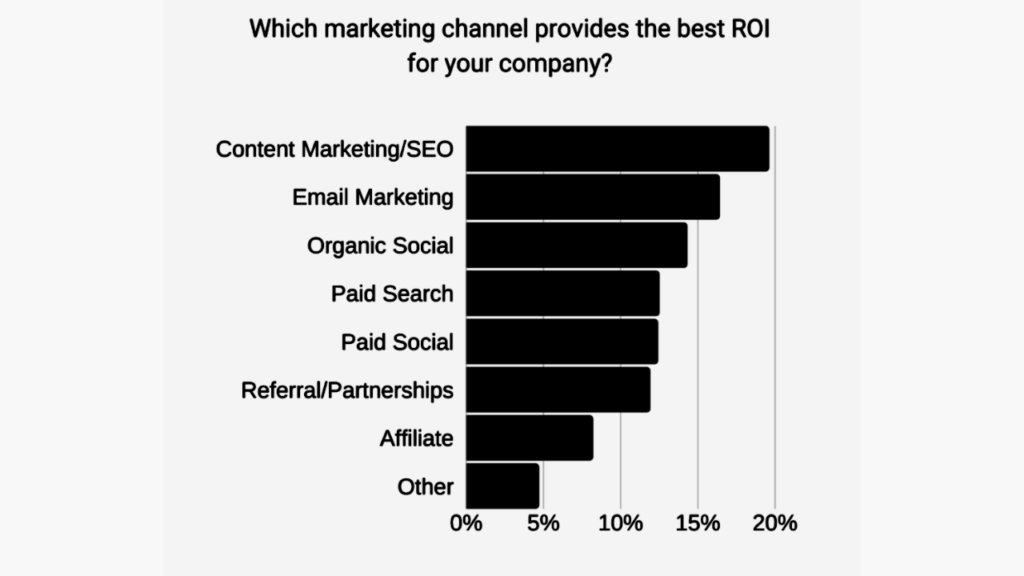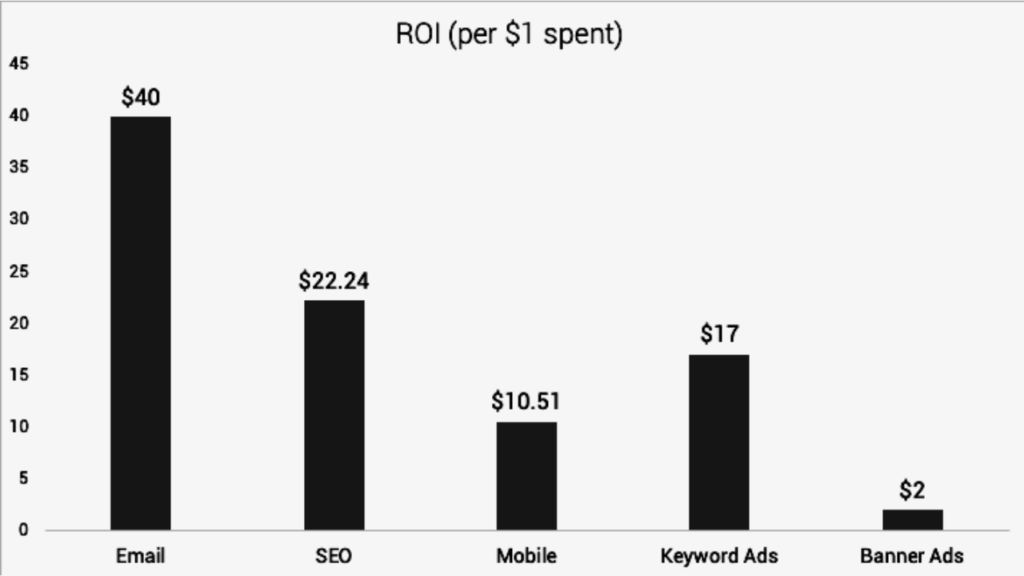Identifying And Mapping Out Your Growth Channels
Businesses must master the art of acquiring new users on Day 0 and retaining them every week and month afterward. Startups face a lot of pressure to “be everywhere” online when they first launch. Choosing the best user acquisition channels can be tricky for young businesses. Here is one example that illustrates the need to run the numbers before implementing anything.
One of my friends had a startup and swore up and down that integrating and partnering was his growth channel. The goal was to get the company’s first 1,000 clients, but I did the math and figured that even the best-case scenario would only generate a few hundred customers.
He partnered with a company with a million email subscribers to promote his company. What a great idea, right?
One million people receive the email, and let us estimate that 50% open it and 10% click on the link. That would bring 50,000 visitors to his website. Suppose 3% of those visitors signed up for the 30-day free trial of his SaaS product. Then, assuming he managed a 40% conversion to paid subscriptions (which is pretty decent, and assumes he has streamlined the onboarding and activation process), he’d have just 600 new customers.
For our next example, imagine your product or service is a bit more costly, and closing the deal will make reference to your sales team. Since you do not have dozens of salespeople on hand, you decide to drive people to a webinar that will be able to handle a large crowd in a short time.
An advertisement you placed on Facebook reaches 50,000 people, and 10% sign up for your webinar. Your event has 2,500 attendees, but only 50 percent of those who signed up show up.
The webinar ends with an amazing sales presentation and you get 10% of participants doing a sales demo or trial. That’s 250 leads for you. Let’s say you have awesome salespeople that convert 50% of them. What’s your total? More than 125 new customers were added.
We didn’t reach our “1,000 new customers” target in either of these scenarios, but there are bigger problems:
- These numbers are not realistic. Most partners don’t have a 1 million-person email list, and the hypothetical open rates, click-through rates, and conversion rates I used aren’t going to be that high in the real world (or at least, not all of them will be that high).
- Using developer resources on integrations that do not meet your business goals is the first example you cited.
- The second time, you’re spending sales and marketing resources on creating assets, running webinars, and conducting sales demos. All of these people could have been doing something more productive – and that goes double if you’re the founder and doing all of this.
That is why you need to ask and answer a few questions.
First question: Who are your customers and how do you reach them?

This appears to be a simple question, and in some cases, it may be.
However, in some cases, such as when running a two-sided marketplace, you may need to consider whether you have the right customer. Assume you’re running a home-buying and selling marketplace. Is your customer a buyer or a seller’s agent? Is it the real estate industry? Is it the home buyer who is ultimately in charge, and you should optimize all paths for them?
Several examples of customer acquisition Growth Channels for a health tech startup. Rather than being end customers, the buying and selling agents in this case serve as channels. This is true of various types of real estate organizations, as well as previous buyers who become sellers.
Second question: What is your customer’s pathway to you and how do you attract them?

After you’ve identified your end customer and the various conduits that lead to them, you should map out specific paths for each, with different tactics tailored to each.
Assume you’re a health-tech company with customers who come from medical practices or insurance companies. You’ll need to create a user flow or chart that shows how customers eventually find their way to your step by step. There are always multiple growth channels to acquire customers, each requiring different tactics from different sources.
Third Exercise: Rank & Analyze Pathways to Find Efficiencies

- After that, we stack-rank all growth channels based on volume, effort, conversion rate, repeatability, and other factors to determine which ones are organically high-performing.
- Our next step is to ask each channel a series of questions. Does this channel have the potential to grow stronger? Are there any ways to do this? Is it possible to replicate the performance of this channel using a different approach?
- We also ask about how to take advantage of network effects occurring on both sides of a two-sided marketplace. Is it possible to attract more customers from one side of the marketplace to the other? Let’s say you sell car parts. Could adding brake suppliers to your list of suppliers allow you to attract a larger volume of buyers who would like to work with just one supplier instead of multiple vendors?
- Finally, be sure to use your network to make sure your investors, advisors, or friends and family have a large following or know “influencers” in your particular industry who can aid in spreading the message.
Examine The ROI of Each Channel

When you look at each channel’s effectiveness, you’ll want to see what return on investment you’re getting for your dollars as well as your time. You might not be able to calculate a dollar amount, but you can think analytically about data such as – how many people will attend a trade show or conference, or how much time it will take to train a temp as opposed to hiring a full-time employee. Furthermore, consider your skillset: can you, for example, operate a trade show booth effectively? Is it possible to offset the travel and conference costs with your networking skills? Are you well connected to “influencers” in your industry?
Reverse Your Growth Channels as a Thought Exercise
Having identified your growth channels within your product, the next step is to reverse them.
What if you flipped them around and used your customer or consumer as your hook? Suppose you own that health tech company and physicians are your customers. Do you know how you might leverage those customers to attract more referrals? Is it possible to put materials or brochures in all of your doctors’ offices? Is there a way they can promote you at a trade show?
Many of these things appear obvious, but a simple exercise like this has proven invaluable for nearly all of our startups. In the first six months of your startup, we recommend that you go through this exercise, and then at least every year if not more depending on the stage of your company’s growth.
Conclusion
Take a smarter approach to growth. Run the numbers and do the research. Educate yourself on the best growth channels that will help you acquire customers early on, then concentrate your efforts on those channels. Don’t be afraid to shut down campaigns that aren’t working, and you’ll never have to worry about overcommitting to channels that aren’t giving you a return.

